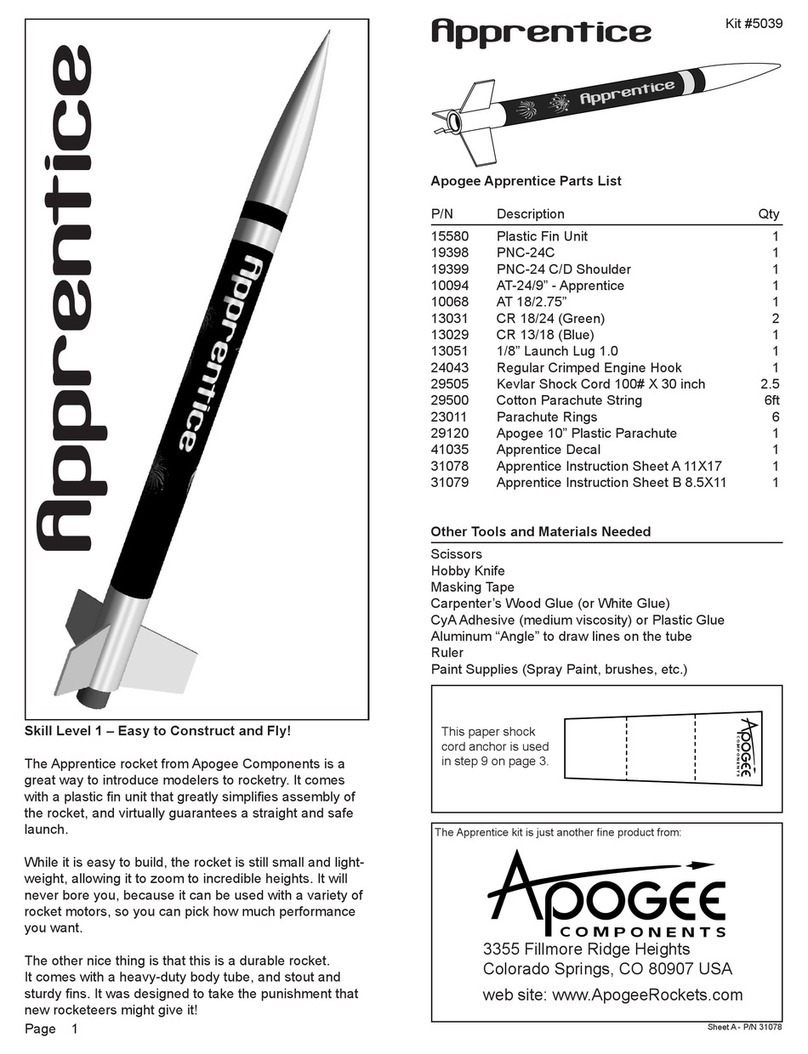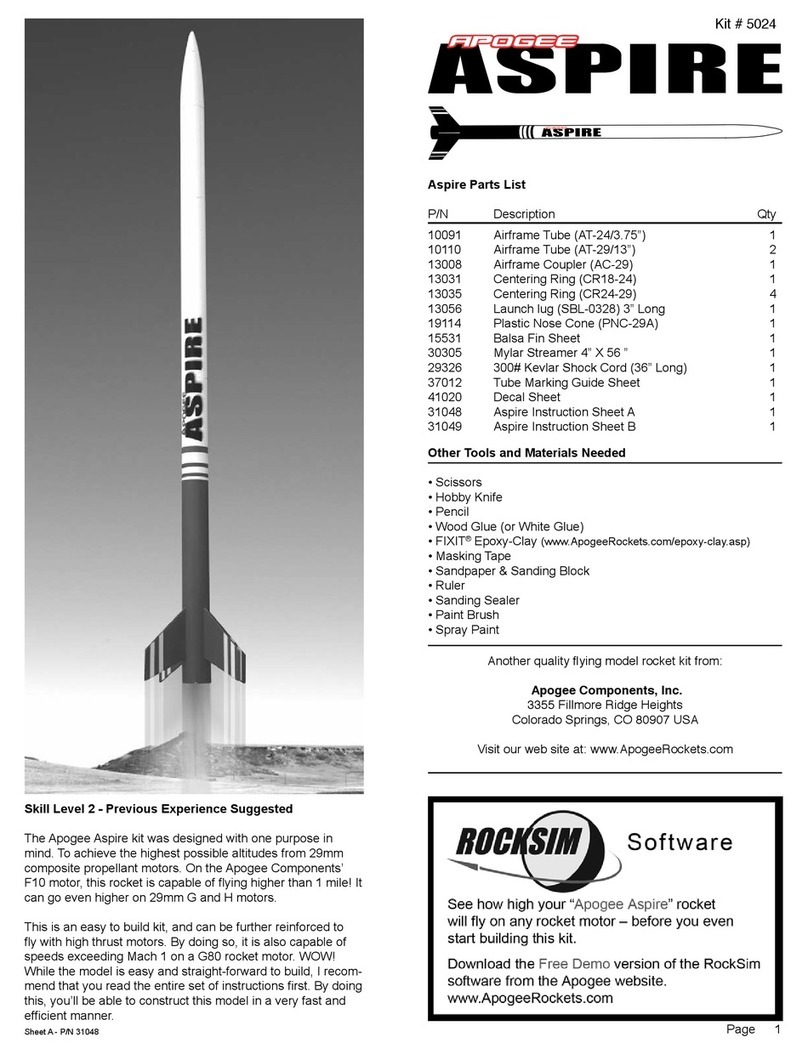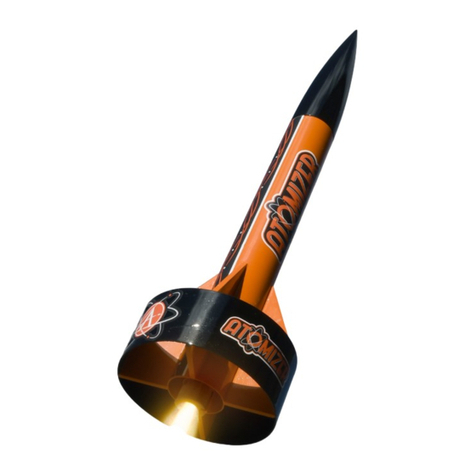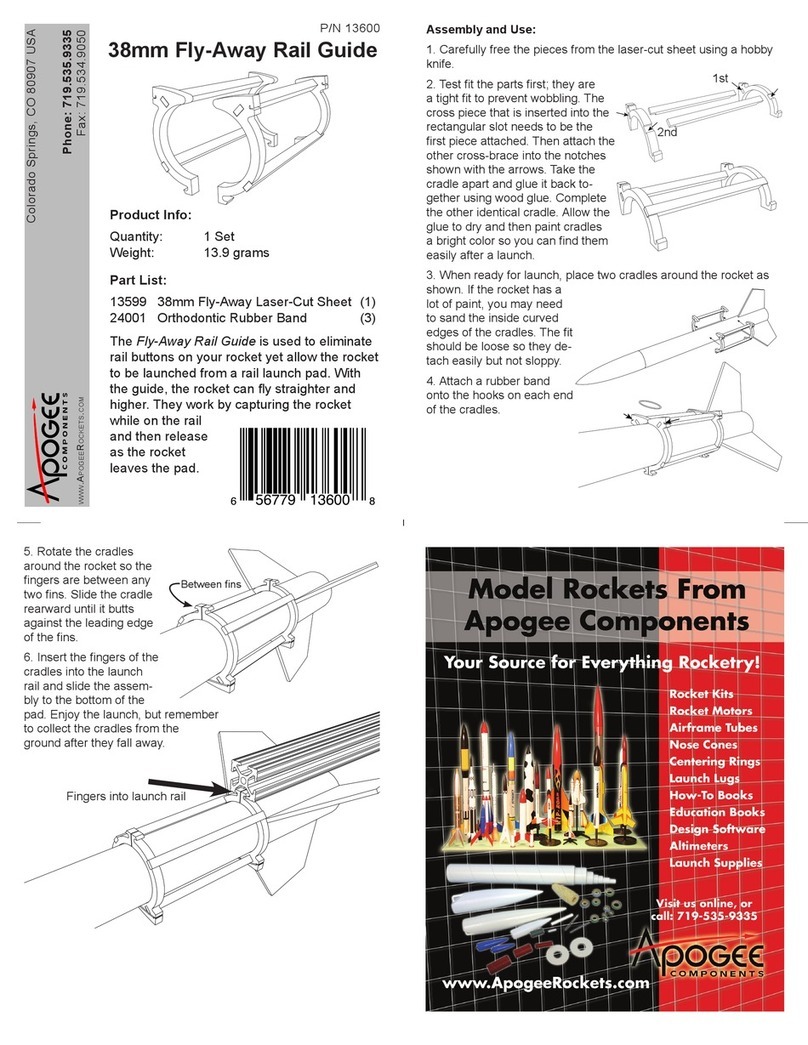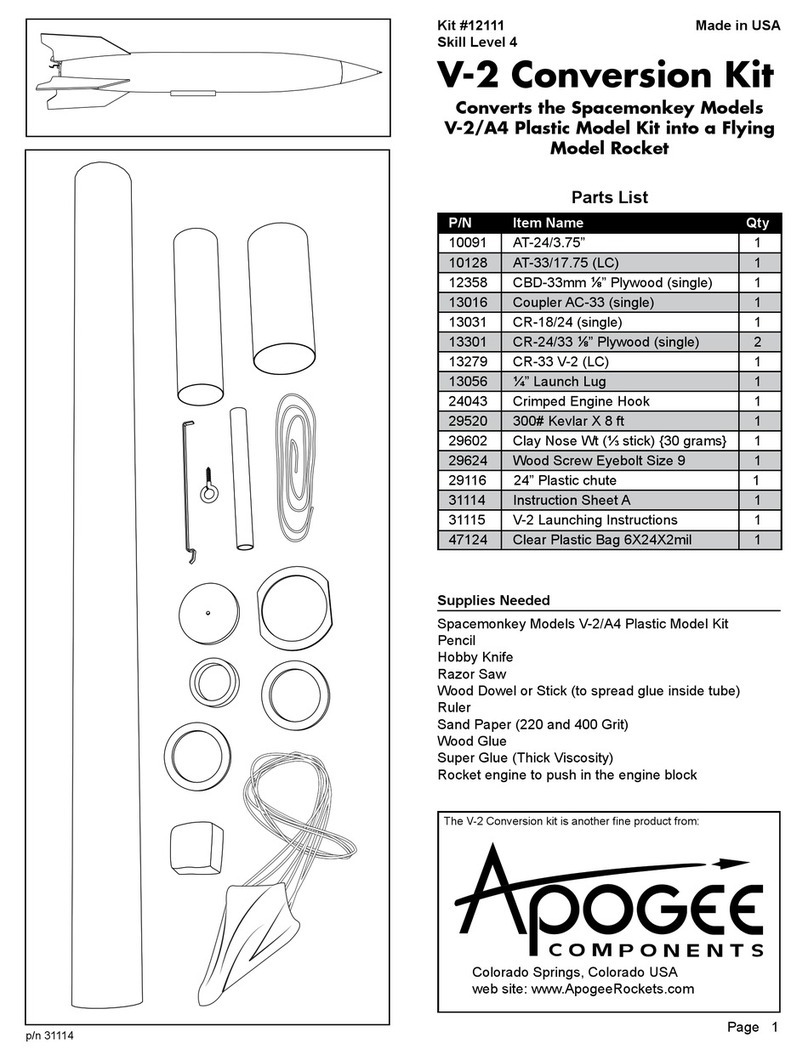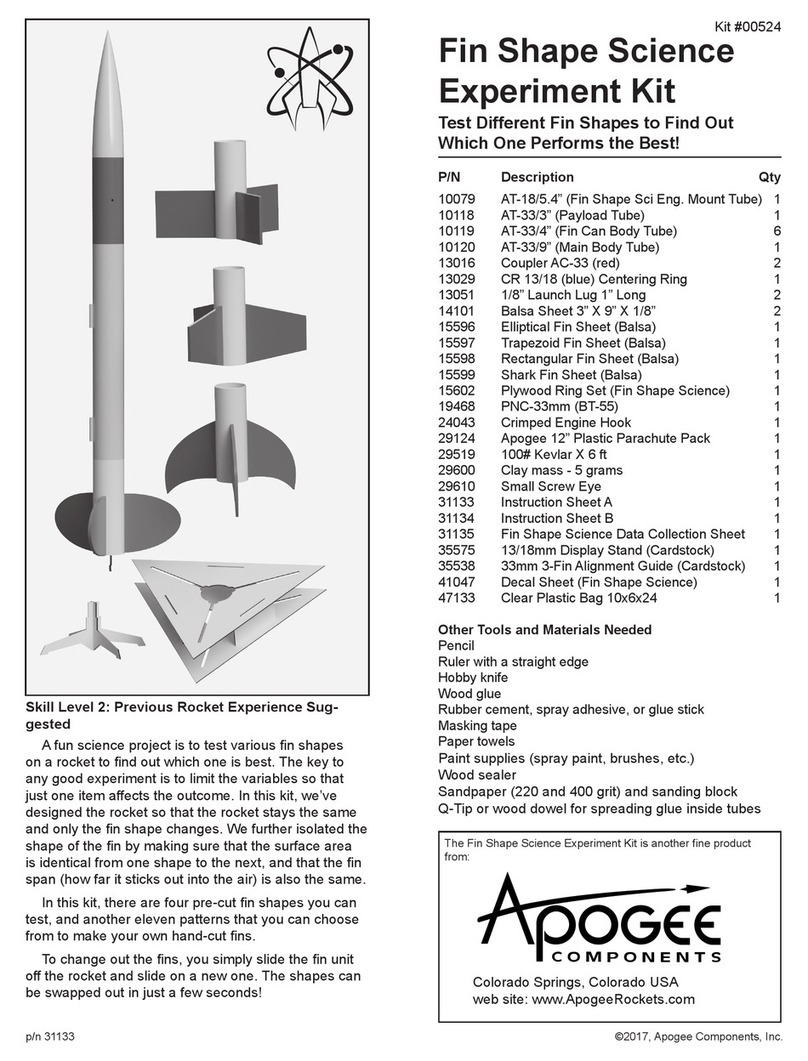
The Draco BG is a model boost glider (BG) based on the
real-life Boeing GBU-39 SDB (Small Diameter Bomb) which
originally was an air-drop ordinance and was later modied
for launching from ground vehicles. This modied version is
known as the GLSDB (Ground-Launched Small Diameter
Bomb) and is a precision weapon system that allows delivering
a payload of 93kg (205 lbs) to a location within a range of 150
km (93 mi) from the mobile launch platform. Development of
the GLSDB was a joint project of Boeing and the Saab Group.
The Draco BG copies the overall conguration of the GLSDB
and the unique folding wing arrangement.
Despite the fancy wing mechanism, ights of the Draco
BG model are simple. It launches upward on 24mm diam-
eter rocket motors. The simple interstage/wing-lock system
ensures reliable transition of the upper stage to glide congu-
ration while the booster recovers under a parachute. While a
challenging build, the Draco BG is a fantastic rocket for those
interested in mechanical design, gliders, and military history.
Item # Item Name Qty
10091 AT-24/3.75” (Motor Tube) 1
10151 AT-41.6/9” (Booster Tube) 1
10154 AT-41.6/18” LC (Fuselage Tube) 1
12976 #4 Flat Washer 4
12977 #4 3/16”x1/4” Unthreaded Off-White Nylon
Standoff 5
12978 #4 3/16”x5/32” Unthreaded Off-White Nylon
Standoff 2
12979 4-40 x 1/2 Black Nylon Panhead Screw 7
13031 CR-18/24 1
13035 CR-24/29 1
13123 AC-41.6/1.5” LC 1
13051 1/8" Launch Lug 1" Long 2
13056 1/4" Launch Lug 3" Long 2
14263 1/8" x 2.5" Wood Dowel 2
15015 CR-24/41.6 Cardstock (Rectangle) 1
15487 Draco BG Jig Sheet Cardstock 1
15488 Draco BG Parts Sheet A 1/8”x4” Balsa 1
15489 Draco BG Parts Sheet B 1/8” Ply 1
15490 Draco BG Parts Sheet C 1/16” Ply 1
15731 Draco BG Wing Sheet 1/8”x4” Balsa 2
15732 Draco BG Fin Sheet 1/8”x4” Balsa 1
15733 Draco BG Stabilizer Sheet 3/32”x4” Balsa 1
19469 PNC-41mm (BT-60) 1
24003 #117B Rubber Band 1
24044 Crimped "E-size" Engine Hook 1
29090 12" Printed Nylon Parachute 1
29518 100# Kevlar x 5 feet 1
29600 Clay Nose Wt 5g 1
31271 Instructions Sheet A 1
31272 Instructions Sheet B 1
31273 Instructions Sheet C 1
31274 Instructions Sheet D 1
31275 Instructions Sheet E 1
31276 Instructions Sheet F 1
39059 Face Card 1
41116 Decal Sheet 1
Skill Level 5
Extremely Challenging
Draco BG Parts List
Optional Tools / Finishing Supplies
Fin Alignment Guide (P/N 35546)
Flat Needle File
Wood Filler
Sanding Sealer
Extra Fine Sandpaper (600 grit)
Spray Paint
Wood Dowel
Ruler or Calipers
Needed Tools and Materials
Hobby Knife with Sharp Blades
Scissors
Razor Saw
Wood Glue
Thin CyAAdhesive
Medium CyAAdhesive
Masking Tape
Medium and Fine Sandpaper (180, 320 grit)
Aluminum Angle
4-40 Tap Page 1
Assembled In USAKit #05065
Skill Level 5
Manufactured in the USA by:
Apogee Components Inc.
Colorado Springs, Colorado, USA
www.ApogeeRockets.com
Instruction Sheet A: P/N 31271 *Updated 9/1/2023

